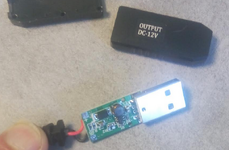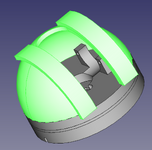cyrilleB
Newbie
Hello,
I have an engineering background, but I am not a EE. Which is why I am seeking help here.
I am designing a small PCB to carry an arduino and include 2 stepper drivers (DRV8825) and one DC-DC, 5V to 12V voltage converter (<10W).
I have done the base design/pcb (visible at: https://oshwlab.com/cyrille.de.brebisson/melt )
But I still need some help identifying/verifying the component selection for the resistor/capacitor (footprint and other details which elude me).
I am also looking for help/advice to add a 5V to 12V DC-DC convertor to generate 12V from the USB vbus for the 2 steppers (small, 0.3A@3.6V/phase)
Thanks for any help you can bring!
Cyrille
I have an engineering background, but I am not a EE. Which is why I am seeking help here.
I am designing a small PCB to carry an arduino and include 2 stepper drivers (DRV8825) and one DC-DC, 5V to 12V voltage converter (<10W).
I have done the base design/pcb (visible at: https://oshwlab.com/cyrille.de.brebisson/melt )
But I still need some help identifying/verifying the component selection for the resistor/capacitor (footprint and other details which elude me).
I am also looking for help/advice to add a 5V to 12V DC-DC convertor to generate 12V from the USB vbus for the 2 steppers (small, 0.3A@3.6V/phase)
Thanks for any help you can bring!
Cyrille

